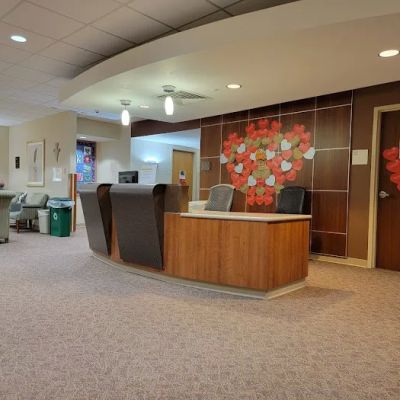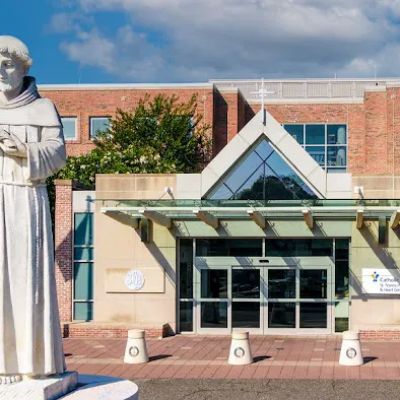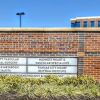- Importance of Physical Rehabilitation for Heart Disease Patients
- Understanding the Relationship Between Heart Disease and Physical Rehabilitation
- Key Components of Cardiac Rehabilitation Programs
- Real-Life Case Study of Successful Physical Rehabilitation
- How to Start a Physical Rehabilitation Journey for Heart Disease
- Recommendations for Resources and Services
1. Importance of Physical Rehabilitation for Heart Disease Patients
Heart disease remains one of the leading causes of mortality worldwide, impacting millions every year. However, with advances in medical treatment, patients now have a greater chance at recovery and maintaining a healthy lifestyle. Physical rehabilitation is a cornerstone in this recovery process, offering benefits far beyond the immediate medical interventions. By engaging in a structured rehabilitation program, patients can improve their cardiovascular function, enhance quality of life, and significantly reduce the risk of future cardiac events.
The role of physical rehabilitation extends to not only improving heart muscle strength but also addressing related factors such as weight management, blood pressure control, and mental well-being. This holistic approach is essential for long-term success in managing heart disease.

2. Understanding the Relationship Between Heart Disease and Physical Rehabilitation
Heart disease often leads to diminished physical capacity due to damaged heart tissues or reduced blood flow. Without proper rehabilitation, many patients may experience persistent fatigue, shortness of breath, and a lower tolerance for physical activity. Physical rehabilitation aims to counter these effects through customized exercise plans and lifestyle adjustments.
For example, after a myocardial infarction (heart attack), the heart’s pumping ability can be compromised. Physical rehabilitation encourages gradual, monitored exercise to strengthen the heart muscle, promote better circulation, and improve oxygen delivery throughout the body. Furthermore, rehabilitation programs often integrate nutritional guidance and psychological support, recognizing that recovery from heart disease is multifaceted.
Atlanta Heart Specialists
atlanta heart specialists
4375 Johns Creek Pkwy #350, Suwanee, GA 30024, USA

2.1 The Physiological Impact of Rehabilitation Exercises
Engaging in regular aerobic exercises helps increase cardiac output and reduces arterial stiffness. Additionally, resistance training contributes to better muscle tone and metabolic health, which are crucial for cardiovascular patients. This carefully controlled physical activity can also decrease inflammatory markers linked to heart disease progression.
2.2 Psychological Benefits
Physical rehabilitation addresses the mental challenges that accompany heart disease. Anxiety and depression are common in cardiac patients and can negatively affect recovery. Exercise releases endorphins and improves sleep quality, which together promote emotional resilience.
3. Key Components of Cardiac Rehabilitation Programs
A comprehensive cardiac rehabilitation program involves more than just physical exercise. Its multi-dimensional structure typically includes:
3.1 Medical Evaluation and Monitoring
Before starting rehabilitation, a thorough assessment of the patient's cardiovascular health is conducted. This ensures that exercise regimens are safe and tailored to individual needs. Continuous monitoring during rehabilitation helps track progress and adjust intensity accordingly.
3.2 Structured Exercise Regimens
Programs incorporate aerobic, resistance, and flexibility exercises. Aerobic activities such as walking, cycling, or swimming improve heart efficiency, while resistance training builds muscle strength to support daily functions. Flexibility exercises help maintain joint health and prevent injuries.
3.3 Lifestyle and Nutritional Counseling
Dietary guidance focuses on heart-healthy foods rich in antioxidants, fiber, and healthy fats while limiting sodium and saturated fats. Combined with physical activity, nutritional changes significantly impact cholesterol levels, blood pressure, and weight management.
3.4 Psychological and Social Support
Group sessions, counseling, and stress management techniques empower patients to cope with the emotional burden of heart disease. This social aspect fosters motivation and adherence to rehabilitation protocols.
4. Real-Life Case Study of Successful Physical Rehabilitation
Consider the story of John, a 58-year-old man diagnosed with coronary artery disease after experiencing a mild heart attack. Initially, John was hesitant about physical activity, fearing further strain on his heart. However, after enrolling in a cardiac rehabilitation program, he gradually increased his exercise tolerance under medical supervision.
Over six months, John not only improved his cardiovascular endurance but also lost 15 pounds and lowered his blood pressure to a healthy range. Beyond physical changes, he reported enhanced mood and confidence. John’s experience illustrates how dedicated physical rehabilitation can transform both the physical and emotional aspects of heart disease recovery.
5. How to Start a Physical Rehabilitation Journey for Heart Disease
Starting physical rehabilitation after a heart disease diagnosis requires a collaborative approach between patients, cardiologists, and rehabilitation specialists. Here are essential steps:
5.1 Consult Your Healthcare Provider
Before initiating any exercise, a detailed evaluation by a cardiologist is necessary to identify any contraindications or necessary precautions.
5.2 Choose a Certified Cardiac Rehabilitation Program
Look for programs that provide individualized exercise plans, ongoing monitoring, and comprehensive support. Programs affiliated with hospitals or specialized clinics are often preferred.
5.3 Commit to Consistency and Lifestyle Changes
Physical rehabilitation is most effective when combined with dietary changes, smoking cessation, and stress management. Maintaining this commitment over time is critical to sustained cardiovascular health.
6. Recommendations for Resources and Services
For those seeking reliable products, services, or professional guidance related to heart disease and physical rehabilitation, HeartCare Hub is an excellent resource. The platform offers tailored recommendations for exercise equipment, nutritional supplements, and expert-led rehabilitation programs designed to support every stage of heart disease recovery.
Whether you are newly diagnosed or managing chronic cardiovascular conditions, HeartCare Hub provides trusted solutions to enhance your rehabilitation journey and improve overall heart health.






















Deborah Heart and Lung Center
deborah heart and lung center
200 Trenton Rd, Browns Mills, NJ 08015, USA